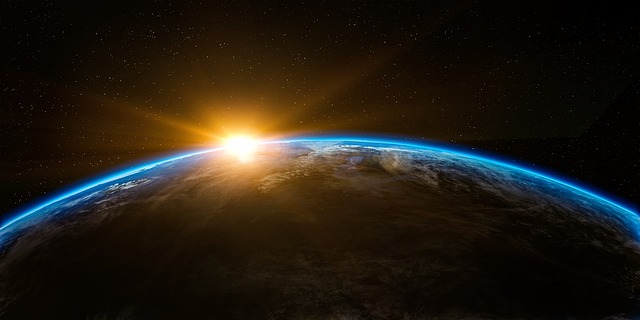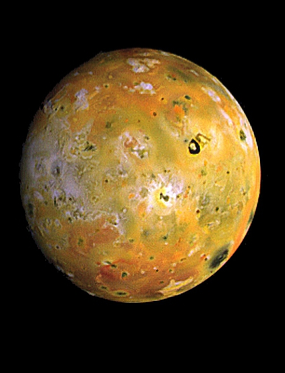*This post may contain affiliate links. This means we may make a commission if you purchase an item using one of our links*
The main differences between Earth and Io is that Earth is a planet that orbits the Sun whilst Io is a natural satellite that orbits Jupiter, Earth has a moon whilst Io has no other celestial bodies orbiting it, Io is the most volcanically active entity in the solar system whilst Earth is the only planet able to sustain intelligent life and Io is the 4th largest moon in the solar system whilst Earth is the 5th largest planet.
There are various other differences between the two so, continue reading for a more detailed look at each of these celestial bodies along with their similarities and differences below.
What Is The Planet Earth?
Table of Contents

Our home planet Earth is the 3rd farthest planet from the Sun, made up of a mixture of water and solid rock like objects, and is the only entity in our solar system known to allow intelligent life forms like ourselves to exist.
Earth’s distance of 152 million km from the Sun has allowed it to remain within the goldilocks zone and as a result, the planet has been able to thrive for millions of years. It orbits the Sun in a circular pattern, much like all the other planets, has only one natural satellite which would be the Moon and is a terrestrial planet to boot.
In regards to its diameter, Earth is the 5th largest planet with a diameter 12,742km.
Earth’s temperature ranges based on the region you’re located where it can be from as low as -94 degrees Celsius in Antarctica to as high as 50 – 55 degrees Celsius in Tunisia.
As for the planets composition, it consists of the crust, the mantle, the outer core and the inner core, where the inner core is the hottest element within the Earth reaching temperature in excess of 5,200 degrees Celsius.
In regards to some of its most unique features, Earth is around 71% water, has an atmosphere consisting mostly of oxygen and nitrogen that is also made up of 5 main layers, with the highest to lowest being the troposphere, stratosphere, mesosphere, thermosphere and exosphere.
A day on Earth is 24 hours and an orbital cycle around the Sun takes 365 days to complete. It’s axial tilt is more distinct at 23.5 degrees to the right.
What Is The Moon Io?

The Moon Io – also known as Jupiter I – is the third largest of the Galilean moons, which has the closest orbit to Jupiter. It is the fourth-largest moon in our solar system by size – with a diameter of 3,643km – but has the highest density of all moons in the Milky Way.
In addition, Io has the strongest surface gravity of all moons and the least water by atomic ratio compared to any other astronomical object in our solar system.
Perhaps the most interesting feature of this lunar body is the 400 active volcanoes on its surface, which make it the most volcanically active object in the Milky Way; some of these volcanoes can exude plumes of sulfur to a height of several hundred miles.
The reason for this intense activity is the tidal heating caused by friction in the moon’s interior. Thanks to Io’s proximity to Jupiter, it finds itself caught between the gravity of its planet plus the two nearby moons – Ganymede and Europa. And this creates extreme tidal forces.
A side effect of these tidal forces is heat, which keeps most of Io’s crust in liquid form. Because of this, the surface of Io experiences a constant state of renewal; sites once home to large craters are slowly filled with molten lava and liquid rock.
While the complete makeup of Io’s surface is not yet defined, theories suggest that its main component could be sulfur and sulfur compounds because of the varied coloring. Silicate rock could also be a likely component as it would account for the high temperatures.
Io orbits Jupiter from a distance of around 422,000km, with an orbit that takes 42.5 hours to complete. Sitting 778,000,000km from the Sun, the surface temperature of this planet sits around -130 degrees Celsius. But due to the intense volcanic activity, the lava flows can reach temperatures of 1649 degrees Celsius, which is far hotter than anything on Earth.
Similarities Between Earth And Io
Earth and Io do have their odd few similarities, which in this case includes the below:
- Both have a hotter central core.
- Both have an atmosphere and a rocky surface.
- Both are a spherical shape.
- Both are part of the same solar system.
- Both have no rings surrounding them.
- Both are volcanically active.
Differences Between Earth And Io
As for the differences between the two, they include the following.
- Earth has 1 moon orbiting it whilst Io has 0.
- Io is tidally locked to Jupiter whilst Earth is not tidally locked to anything.
- Io has a diameter of 3,643km whilst Earth has a diameter of 12,742km.
- The orbital period of the Earth around the Sun is 365 days whilst Io’s orbit around Jupiter is 42 hours and is 12 years to orbit Sun.
- Earth orbits the Sun in a nearly circular pattern whilst Io orbits Jupiter elliptically.
- A day on Earth is 24 hours whilst a day on Io is between 42 – 43.
- Earth’s density is 5.51 g/cm³ whilst Io’s is 3.53 g/cm³.
- Io’s gravitational strength is 1.796 m/s² whilst Earth’s is 9.807 m/s².
- In regards to mass, Earth’s is 5.972 × 10^24 kg whilst Io’s is 8.93 × 10^22 kg.
- Earth’s average temperature is 13.9 degrees Celsius whilst Io’s is around -130 degrees Celsius.
- Earth has a water cycle whilst Io does not.
- Earth has an atmosphere with 5 main layers whilst Io has a no significant atmosphere to speak of.
- Io cannot support intelligent life whilst Earth is the only known planet that we are aware of that can.
- Io is the most volcanically active celestial body in our solar system.
Summary
The Earth and Io are very different entities from one another even if they both have volcanic activity on their surface and have similar terrestrial compositions.
Whether it be in regards to their mass, size, temperature, the length of their days, their ability to harbor life and beyond, the two are designed to function very differently from each other and this very clearly shown in how they operate o a day to day basis in outer space.

